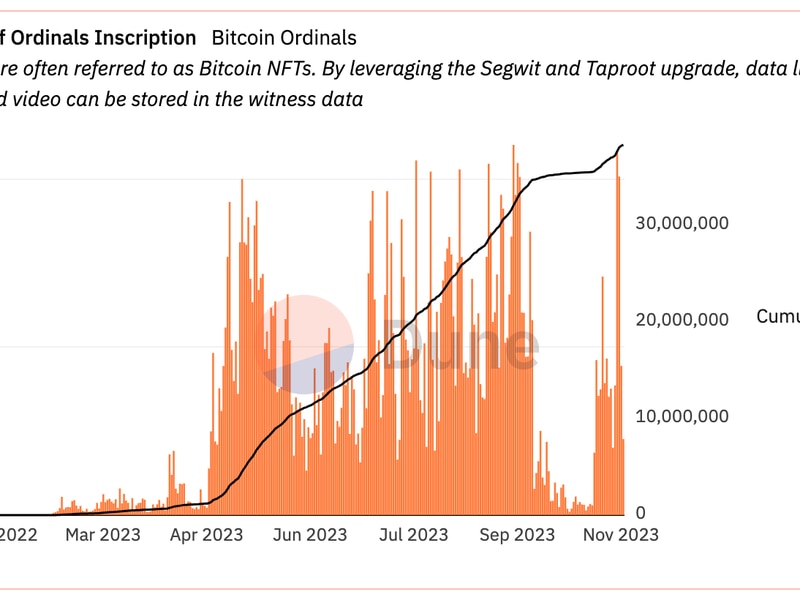Sam Bankman-Fried (Probably) Won’t Get a 115-Year Prison Sentence
If he’s convicted of wire fraud and/or conspiracy charges, FTX founder Sam Bankman-Fried will probably spend quite a bit of time behind bars. But there’s a good chance the 31-year-old won’t spend the rest of his life in prison.
Bankman-Fried’s trial tied to the operation and collapse of FTX and its affiliated hedge fund, Alameda Research, kicks off next week. Prosecutors will have to prove that he knowingly lied to his customers or lenders, knew it was wrong, was trying to defraud them, or knowingly worked with at least one other person to try and defraud lenders, customers or investors.
The burden of proof rests on the prosecution’s shoulders. The defense team, in contrast, only has to convince a jury that the U.S. Department of Justice didn’t successfully make its case that Bankman-Fried violated the law.
You’re reading The SBF Trial, a CoinDesk newsletter bringing you daily insights from inside the courtroom where Sam Bankman-Fried will try to stay out of prison. Want to receive it directly? Sign up here.
The charges themselves are:
-
committing wire fraud on FTX customers
-
conspiring to commit wire fraud on FTX customers
-
committing wire fraud on Alameda Research lenders
-
conspiring to commit wire fraud on Alameda Research lenders
-
conspiring to commit securities fraud against FTX investors
-
conspiring to commit [commodities?] fraud against FTX customers
-
conspiring to commit money laundering to hide the proceeds of wire fraud on FTX customers
Substantive versus conspiracy
Of these, only charges one and three – wire fraud on FTX customers and Alameda Research lenders – are “substantive” charges, meaning the Department of Justice is alleging that Bankman-Fried himself actively committed the crimes.
The remaining five are “conspiracy” charges, meaning prosecutors allege he planned to commit a crime with at least one other person. The DOJ, in its proposed jury instructions, asked Judge Lewis Kaplan to clarify that “there is no need to prove that the crime or crimes … actually were committed,” with conspiracy charges, unlike the substantive charges.
Martin Auerbach, an attorney with law firm Withersworldwide, told CoinDesk that for the conspiracy charges, the DOJ will have to prove beyond a reasonable doubt that at least two people “agreed that they’re going to defraud people,” and overtly acted to do so.
Sending out emails or otherwise trying to (allegedly) defraud people through some online tool meets the interstate requirement for the wire fraud charge, he said.
For the substantive charges, the DOJ will have to prove that Bankman-Fried actually committed the crime, Auerbach said.
Making a case
The fraud-related charges are relatively similar, Jordan Estes, a partner at Kramer Levin, told CoinDesk. They all involve Bankman-Fried allegedly lying to customers or lenders. The DOJ will likely try to simplify the case as much as possible for the jury to focus on the lies and deceit they’re claiming he engaged in.
Part of this is intent, Estes said. If Bankman-Fried’s defense team can prove he didn’t intend to try and commit fraud, he may be found not guilty of the charges arrayed against him.
The defense’s job is to argue that the DOJ did not make its case. With an advice-of-counsel defense, which Bankman-Fried’s attorneys have said they’ll make, the argument may be that the FTX founder ran his actions by his lawyers while at the exchange, and they okayed them.
“It really goes to the intent of the defendant, because one of the things the government has to prove is that he intended to defraud, that he intended to do something wrongful,” Estes said. “And he may be able to show that he had lawyers that were helping him at every step of the way, and ask the jury to infer that based on that … that he had every reason to believe he was not doing anything wrong.”
To do this, the defense team may try and attack the credibility of the DOJ’s witnesses or the evidence, Auerbach said. For example, they may say that some of the cooperating witnesses – meaning members of the FTX inner circle – are testifying on the DOJ’s behalf and using the DOJ’s characterization because they run the risk of going to jail themselves otherwise.
Prosecutors may also have to show that Bankman-Fried either didn’t provide his lawyers with all of the material information they needed to advise him properly to push back against the advice-of-counsel defense.
Defense attorneys also hope to bring on certain expert witnesses to rebut testimony. While the judge rejected all of the proposed defense witnesses, the defense can still try to call some up provided they meet certain requirements, a ruling Estes said was appropriate. It would be difficult for these proposed witnesses to know what, specifically, they need to discuss before they see what they are rebutting.
As CoinDesk previously noted, a verdict on each of the charges needs to be unanimous. Every member of the jury will need to believe that Bankman-Fried did or did not commit each of the seven crimes he’s accused of.
If a jury comes back and says they are divided on any of the counts, the judge can send them back with instructions to try again. If the jury keeps coming back, the judge can say the jury hanged on that charge.
The DOJ could retry Bankman-Fried on any hung charges, Estes said. Prosecutors can’t bring back any charges that he is acquitted of, however, though the defense can appeal any guilty verdicts.
115 years in jail?
The DOJ noted that under federal sentencing guidelines, convictions under the wire fraud, wire fraud conspiracy and money laundering conspiracy charges each carry a 20-year maximum prison sentence, while the commodities fraud, securities fraud and campaign finance conspiracy charges each carry a maximum five-year sentence. Totaled, the original eight charges Bankman-Fried faced (one was later dropped) carried a total sentence of 115 years.
Though there’s headlines suggesting Bankman-Fried could spend over 100 or 150 years in prison, in reality, he will likely spend nowhere near that much time behind bars should he be convicted. For one thing, even if there’s multiple convictions, the sentences are more likely to be concurrent than consecutive.
Similar charges are grouped, Estes said.
“When a judge is sentencing a defendant in a multi-count case, assuming conviction on multiple counts, judges generally say ‘I’m going to distill this down to what the alleged crime is,’” Auerbach said. “If the essential crime is, let’s assume a conviction that Bankman-Fried misled his investors, his lenders and his customers, basically those are all variations on the same theme, so [the judge will] sentence for that core wrongful conduct.”
There’s no mandatory minimum, Estes said. Given the nature of the charges, there may still be a large sentence though. Under federal sentencing guidelines, the dollar amount of losses and other details could lead to enhancements, which would add to the potential sentence.
Before the judge gets to sentencing, the U.S. Probation and Pretrial Services System will create a recommendation. They may look at the trial transcript and Bankman-Fried’s background, and may potentially interview Bankman-Fried himself.
That recommendation will go to the judge, and the defense and prosecution will each provide their own recommendations.
Several lawyers CoinDesk spoke to said that Bankman-Fried – if convicted – could spend 10 to 20 years or so in prison, given the severity of the crimes and the estimated losses. Of course, Judge Kaplan has broad discretion, and he will ultimately set the final sentence.
“At bottom, [fraud cases] – even if they involve cryptocurrency or these complicated things – they can be really simple. They can be about ‘did he lie to these people, investors, lenders, customers? And when he did, did he thing it was wrong?’” Estes said. “I think there’s a way to simplify it … both for the prosecution and the defense, and that’s ultimately what the case will come down to. And it’s interesting that even as we move to complicated assets and all these novel things in the financial industry, the heart of a fraud case is actually pretty similar.”
Edited by Nick Baker.









